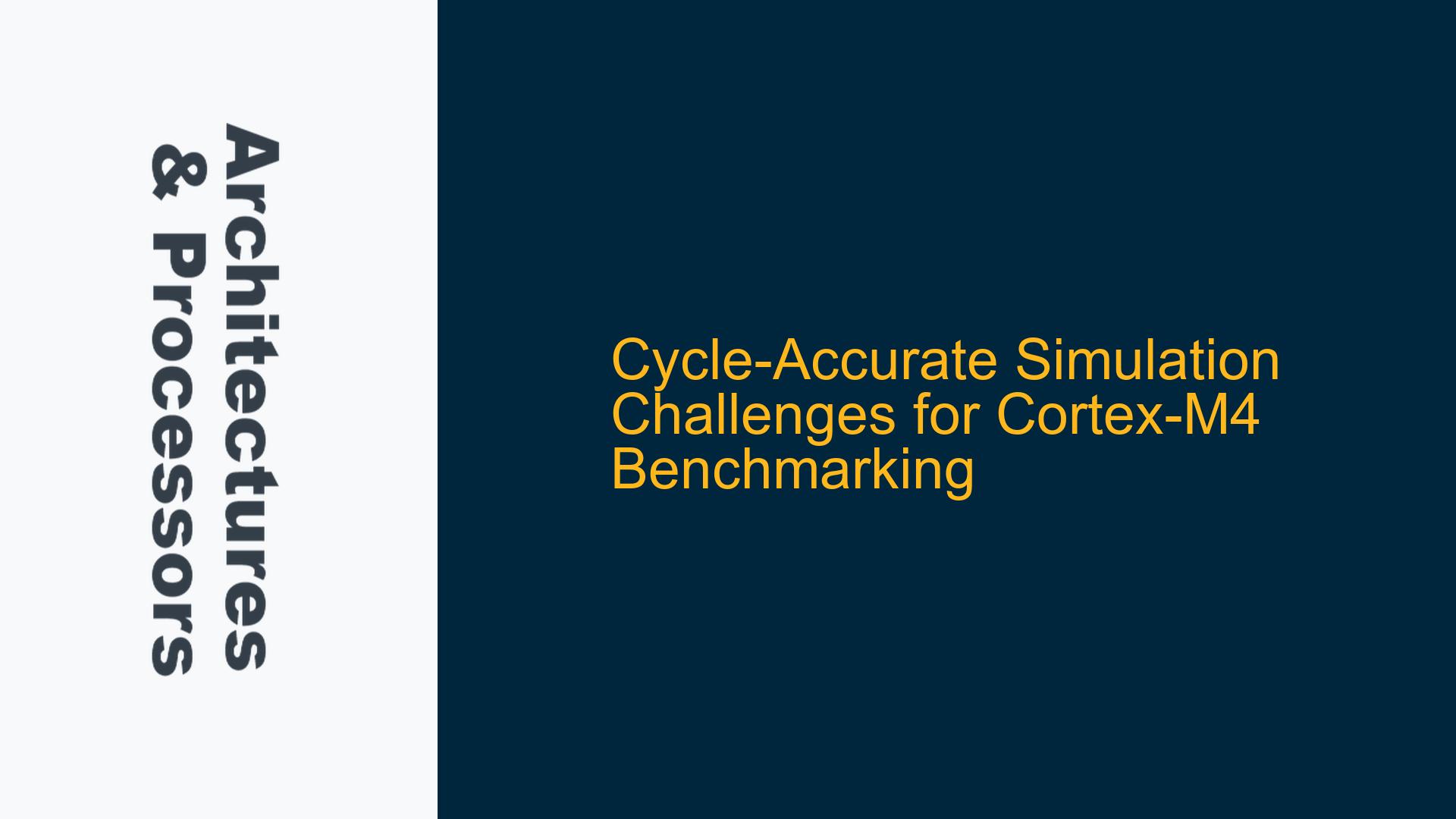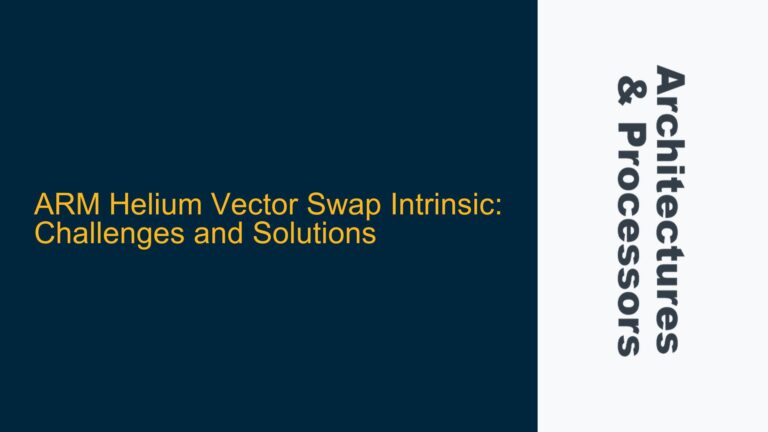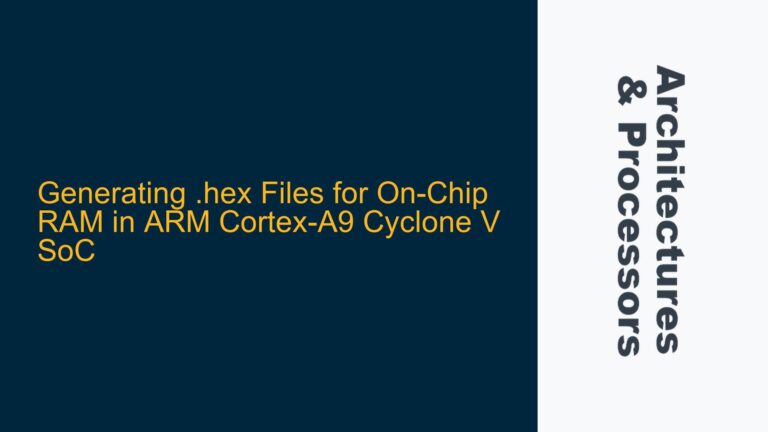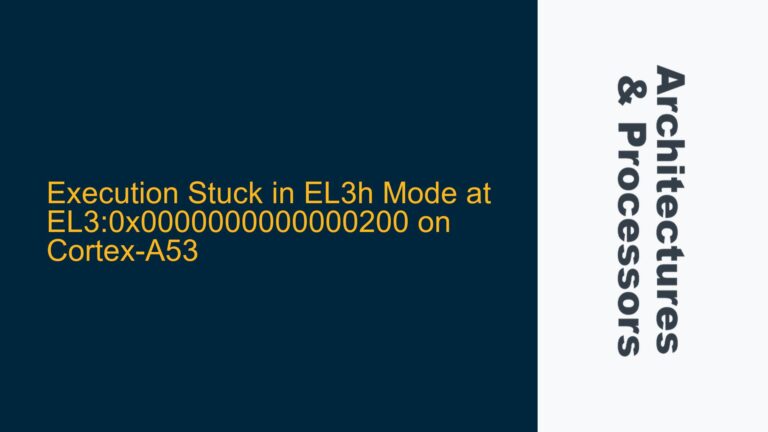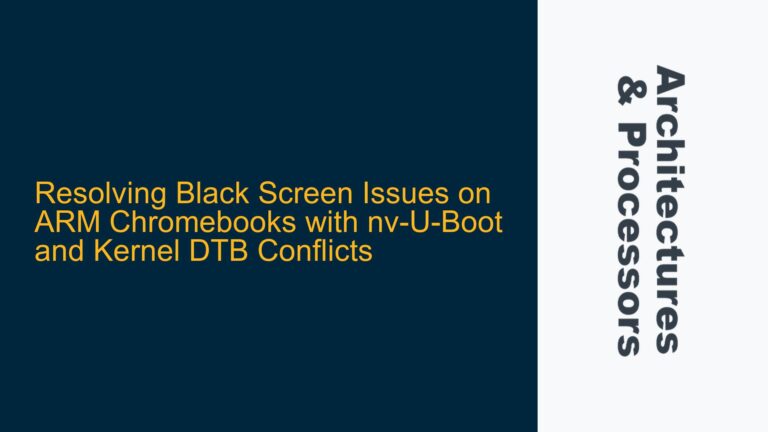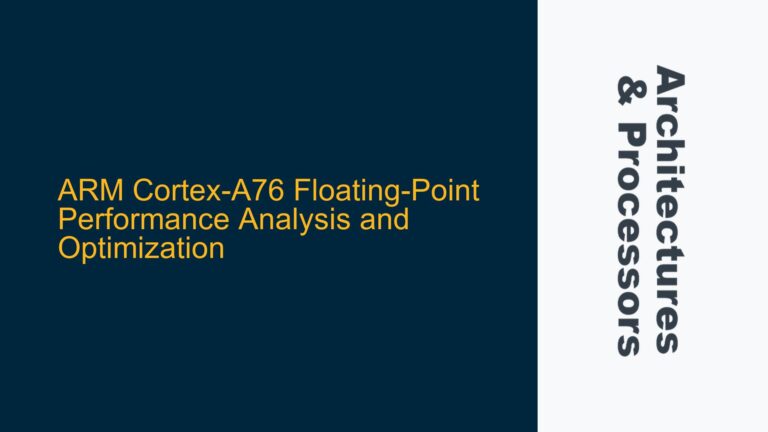Cortex-M4 Cycle-Accurate Simulation Limitations in Arm Dev Studio
The Cortex-M4 processor, widely used in embedded systems, often requires cycle-accurate simulation for precise performance benchmarking and optimization. However, achieving true cycle accuracy in simulation environments, particularly within Arm Development Studio, presents significant challenges. The primary issue stems from the inherent trade-offs between simulation speed and accuracy. Cycle-accurate simulators must model every clock cycle of the processor, including pipeline stages, memory accesses, and peripheral interactions, which can drastically reduce simulation performance. Arm Development Studio provides Fixed Virtual Platforms (FVPs) for Cortex-M4, but these are not cycle-accurate by default. FVPs are designed for functional verification and software development, offering a balance between simulation speed and accuracy. For cycle-accurate benchmarking, developers often need to explore alternative solutions, such as FPGA-based prototyping or specialized simulation tools.
The Cortex-M4’s architecture, with its Harvard architecture, pipelined execution, and optional Floating-Point Unit (FPU), adds complexity to cycle-accurate simulation. The processor’s pipeline, which includes fetch, decode, execute, memory access, and write-back stages, must be modeled precisely to ensure accurate cycle counts. Additionally, the Cortex-M4’s memory system, including its optional cache and Tightly Coupled Memory (TCM), introduces further challenges. Memory access patterns, bus contention, and wait states can significantly impact performance, and these factors must be accurately simulated to provide meaningful benchmarking results.
Trade-offs Between Simulation Accuracy and Performance
The primary challenge in achieving cycle-accurate simulation for the Cortex-M4 lies in the trade-offs between simulation accuracy and performance. Cycle-accurate simulators must model the processor’s internal state at every clock cycle, including the state of the pipeline, registers, and memory system. This level of detail requires significant computational resources, leading to slower simulation speeds compared to functional simulators. For example, a cycle-accurate simulator might run at a fraction of the speed of the actual hardware, making it impractical for large-scale software testing or long-running benchmarks.
Arm Development Studio’s FVPs are optimized for functional correctness rather than cycle accuracy. They provide a high-level model of the Cortex-M4 processor, focusing on ensuring that software behaves as expected on the target hardware. While FVPs can simulate the processor’s instruction set and basic timing behavior, they do not provide the detailed cycle-level information required for precise performance analysis. This limitation is particularly problematic for developers working on performance-critical applications, such as real-time systems or digital signal processing, where understanding the exact timing of code execution is essential.
Another factor contributing to the difficulty of cycle-accurate simulation is the complexity of the Cortex-M4’s memory system. The processor’s optional cache and TCM introduce variability in memory access times, depending on whether data is cached or not. Additionally, the Cortex-M4’s bus interface, typically using AMBA AHB or AXI protocols, can introduce wait states due to bus contention or slow peripheral responses. Accurately modeling these effects in a simulator requires detailed knowledge of the memory system’s behavior and the ability to simulate bus transactions at the cycle level.
Leveraging FPGA Prototyping and Specialized Tools for Cycle-Accurate Benchmarking
Given the limitations of software-based simulators, developers seeking cycle-accurate benchmarking for the Cortex-M4 often turn to FPGA-based prototyping or specialized simulation tools. FPGA prototyping involves implementing the Cortex-M4 design on an FPGA, allowing the processor to run at or near real-time speeds. This approach provides true cycle accuracy, as the FPGA hardware replicates the behavior of the actual processor. Arm’s MPS2 FPGA prototyping boards, for example, are designed to closely match the behavior of Cortex-M series processors, making them an excellent choice for cycle-accurate benchmarking.
The MPS2 platform offers several advantages for cycle-accurate simulation. First, it provides a hardware environment that closely mirrors the target system, including the processor, memory, and peripherals. This allows developers to run their code on actual hardware, eliminating the inaccuracies associated with software-based simulation. Second, the MPS2 platform supports real-time debugging and performance analysis, enabling developers to measure cycle counts and identify performance bottlenecks. Finally, the MPS2 platform is tightly integrated with Arm Development Studio, allowing developers to seamlessly transition from software simulation to hardware prototyping.
For developers who cannot access FPGA hardware, specialized simulation tools may offer a compromise between accuracy and performance. Tools such as Synopsys’ Virtualizer or Cadence’s Palladium provide high-performance simulation environments with varying degrees of cycle accuracy. These tools use advanced techniques, such as just-in-time compilation and hardware acceleration, to improve simulation speed while maintaining a high level of accuracy. However, they often require significant investment in terms of cost and setup time, making them less accessible for smaller development teams.
In conclusion, achieving cycle-accurate simulation for the Cortex-M4 processor is a complex challenge that requires careful consideration of the trade-offs between accuracy and performance. While Arm Development Studio’s FVPs provide a functional simulation environment, they are not suitable for precise performance benchmarking. Developers seeking cycle-accurate results should consider FPGA-based prototyping, such as the MPS2 platform, or specialized simulation tools. These solutions offer the necessary accuracy for performance analysis, enabling developers to optimize their code and achieve the desired level of performance in their Cortex-M4-based systems.
